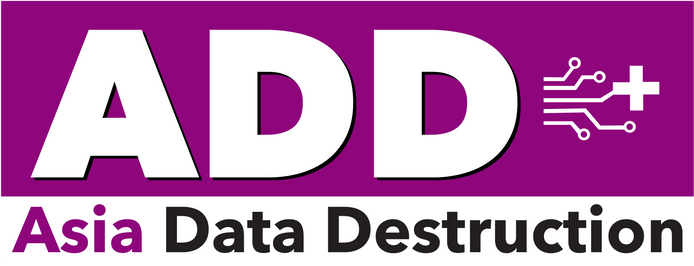
Data wiping or data erasure has become a critical process to ensure the safe disposal of information.
What is Data Wiping? In today’s digital era, where data plays a crucial role in both personal and business aspects, protecting sensitive information is paramount. This practice involves permanently removing all traces of data from storage devices, making it unrecoverable by any means. Whether it’s an old computer, hard drive, or mobile device, data wiping is a reliable solution for protecting sensitive information and reducing the risk of data breaches.
What is Data Wiping or Data Erasure?
Data wiping software is used to permanently delete data by overwriting the existing data on a hard drive.
The process involves overwriting the data on the hard drive with zeros (from binary code) in all parts of the data, which can erase data from multiple devices simultaneously and allows the devices to be reused.
Data wiping, also known as data erasure, refers to the systematic process of permanently deleting data from storage devices to prevent unauthorized access or data recovery. When data is deleted in the usual manner, such as by using the delete button or formatting the device, the data is not completely removed but remains on the device until it is overwritten by new data. This creates a security vulnerability because skilled individuals or malicious software can recover deleted data.
Data wiping uses special software techniques to overwrite the entire storage medium with random or predetermined patterns, ensuring the original data cannot be recovered. This guarantees that no traces of the original data remain, ensuring the privacy and confidentiality of sensitive information.
When we delete files or format a storage device, the data is not completely erased; it remains on the device and can be recovered using associated software. Data wiping goes beyond simple deletion and employs advanced techniques to overwrite existing data with random patterns of zeros and ones.
The purpose of data wiping is to make the existing original data irretrievable by replacing or overwriting all parts of the original data. This method helps protect confidential information from falling into the wrong hands and reduces the risk of data breaches, identity theft, or unauthorized access.
Data wiping is often performed in the following scenarios:
- End of life or sale of old storage devices: Before disposing of or selling computers, hard drives, or other storage devices, it is crucial to wipe data from them to prevent others from accessing personal or confidential information.
- Recycling electronic devices: When recycling electronic devices, data wiping ensures that any residual data on the devices is permanently deleted, reducing the risk of data leaks.
- Transfer of device ownership: Before transferring ownership of a device, such as when selling or donating it, data wiping ensures that your personal information is inaccessible to the new owner.
- Compliance with regulations: Many industries, such as healthcare and finance, have stringent regulations regarding data protection and privacy. Data wiping helps organizations comply with these regulations by ensuring that sensitive data is securely deleted when no longer needed.
Benefits of Data Wiping:
- Data Protection: Secure data wiping allows us to protect confidential and sensitive information from unauthorized access or misuse. This is especially important when disposing of or recycling storage devices, as it helps prevent data breaches and identity theft.
- Regulatory Compliance: Many businesses and sectors have regulations and laws on data protection that require organizations to properly delete or destroy data before disposing of devices. Data wiping helps organizations comply with these requirements and avoid legal and financial risks.
- Resource Savings: Instead of physically destroying storage devices, data wiping allows for reuse or resale, potentially saving significant costs for organizations as they can reuse devices or generate revenue from sales.
- Environmental Consideration: Proper data wiping and the reuse or recycling of storage devices help reduce electronic waste and environmental impact. It promotes sustainability by extending the life of devices and reducing the demand for new devices.
- Reuse and Resale: Data wiping and data erasure enable organizations to safely reuse or sell their storage devices without risking the exposure of sensitive information. This promotes efficient resource use and reduces electronic waste.
- Peace of Mind: Knowing that data has been securely erased gives individuals and organizations peace of mind. It reduces concerns about residual data, accidental data leaks, or data falling into the wrong hands.
To ensure data is securely wiped and meets international standards, it is recommended to use globally certified data wiping software. Such software employs advanced scientific methods and techniques to overwrite data multiple times, making it difficult or impossible to recover. These programs often come with certifications, such as those from the National Institute of Standards and Technology (NIST) or the Common Criteria for Information Technology Security Evaluation (CC). These certifications confirm the capability and reliability of the software to securely wipe data.
Conclusion
In conclusion, data wiping, also known as data erasure, is the process of permanently deleting data from storage devices, making it unrecoverable. It offers numerous benefits, including enhanced data security, regulatory compliance, the ability to reuse and resell devices, and cost savings. By adopting data wiping practices, individuals and organizations can ensure the protection of sensitive data, reduce the risk of data breaches, and demonstrate responsible data management practices in an increasingly data-driven world.
Read more about: Data Erasure


 ไทย
ไทย 日本語
日本語 Tiếng Việt
Tiếng Việt ភាសាខ្មែរ
ភាសាខ្មែរ


